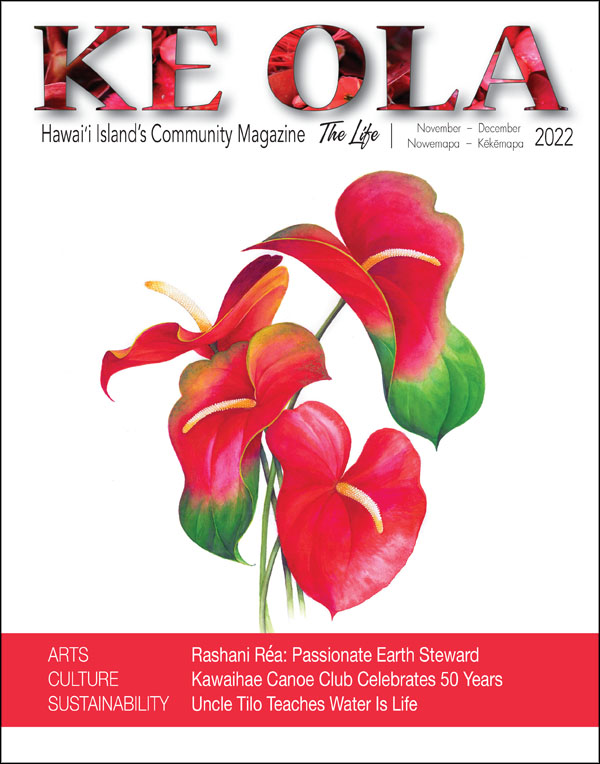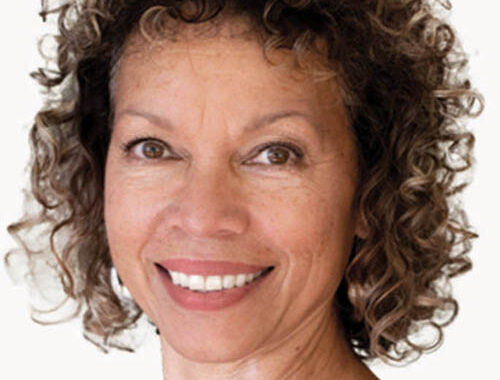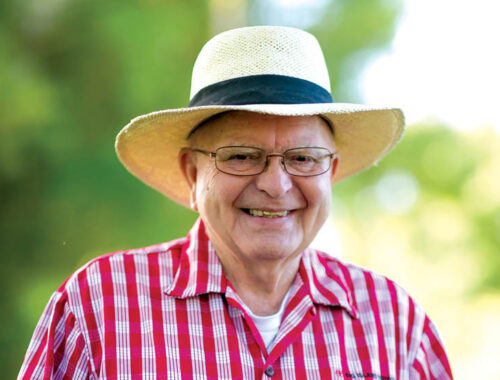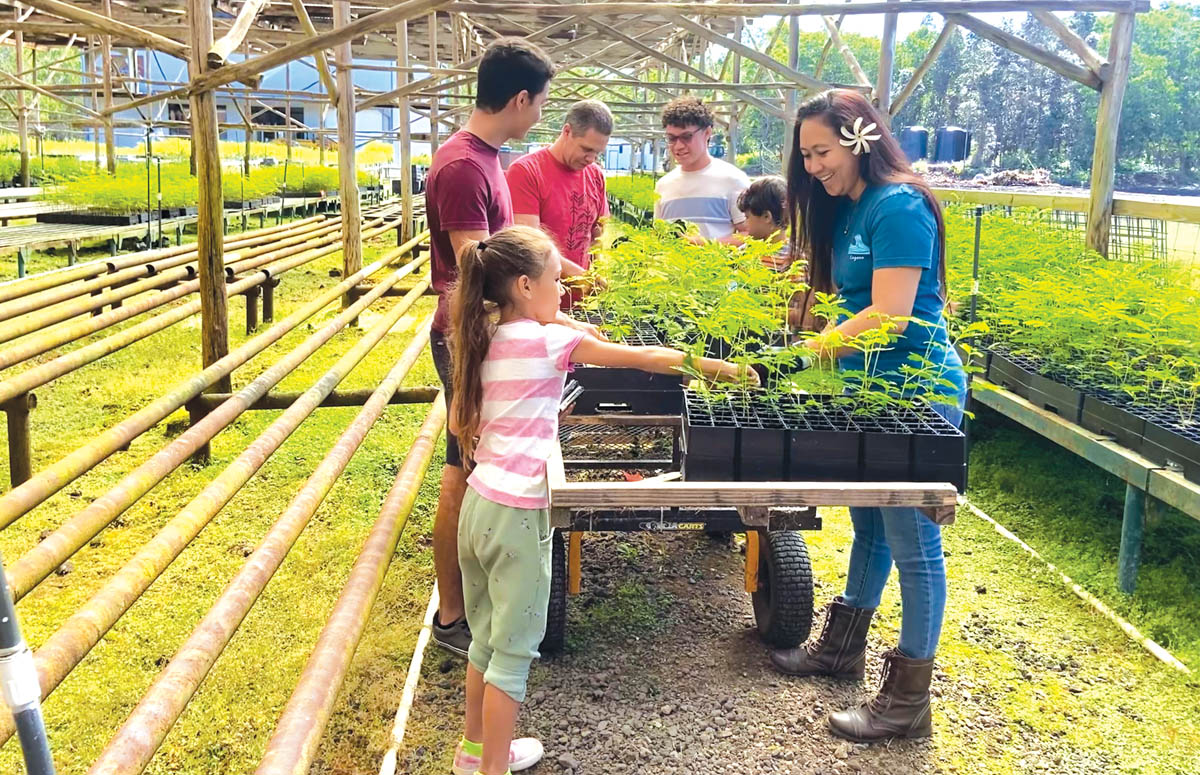
Planting the Forest Back Together

By Rachel Laderman
The Kealakekua Forest Nursery (KFN) is the biggest native plant nursery in the state, and it is run with a big heart, driven by love for the land and Hawaiian heritage. It provides seedlings for many reforestation projects, including the largest reforestation program in the history of Hawai‘i.
The nursery, nestled on the lower slopes of Mauna Loa, was started to fulfill a need for native plants to be grown in the same environment that they would eventually be planted in. dōTERRA, a company that sells essential oils, was seeking a sustainable source of ‘iliahi (sandalwood), the native tree prized for its warm scent. Native Hawaiians used ‘iliahi for medicine, carvings, and to scent kapa (bark cloth). Hawai‘i Island’s sandalwood was heavily logged in the 1800s for sale to China, where it was in enormous demand for use as incense and furniture. Thousands of tons of the fragrant tree were hauled out of the forests, devastating the forest ecology as well as the community. After logging, the lands were turned into cattle ranches. Invasive grasses took over, and the hooves and grazing of cows, plus goats, sheep, and pigs, eroded the soil and degraded the remaining native forests.
In 2018, dōTERRA purchased the Kealakekua Heritage Ranch, which still had patches of native forest, including some not-very-healthy ‘iliahi. The ranch had at one time been slated for development but had been protected by the Department of Land and Natural Resources through the US Forest Service’s Forest Legacy Program. dōTERRA established the ranch as the 9,627-acre Kealakekua Mountain Reserve (KMR), and developed a 10-year forestry management plan to restore the native forest, with a focus on ‘iliahi.
“Their plan includes harvesting only dead or dying ‘iliahi for their essential oils, which are extracted and distilled in Hawai‘i,” explains Keli‘ikanoe Mahi, director of Hiki Ola, a nonprofit offering education and cultural awareness through KMR. Healthy trees are left to grow to maturity, which may take 60 years. “They have planted 1500 acres so far, towards a plan of one million trees; 300,000 trees planted so far.” Keli‘ikanoe is the former principal of Ke Kula ‘o ‘Ehunuikaimalino, a Hawaiian language immersion school, where she first started taking school groups to work on reforestation. She continues to connect that community and the land through Hiki Ola.
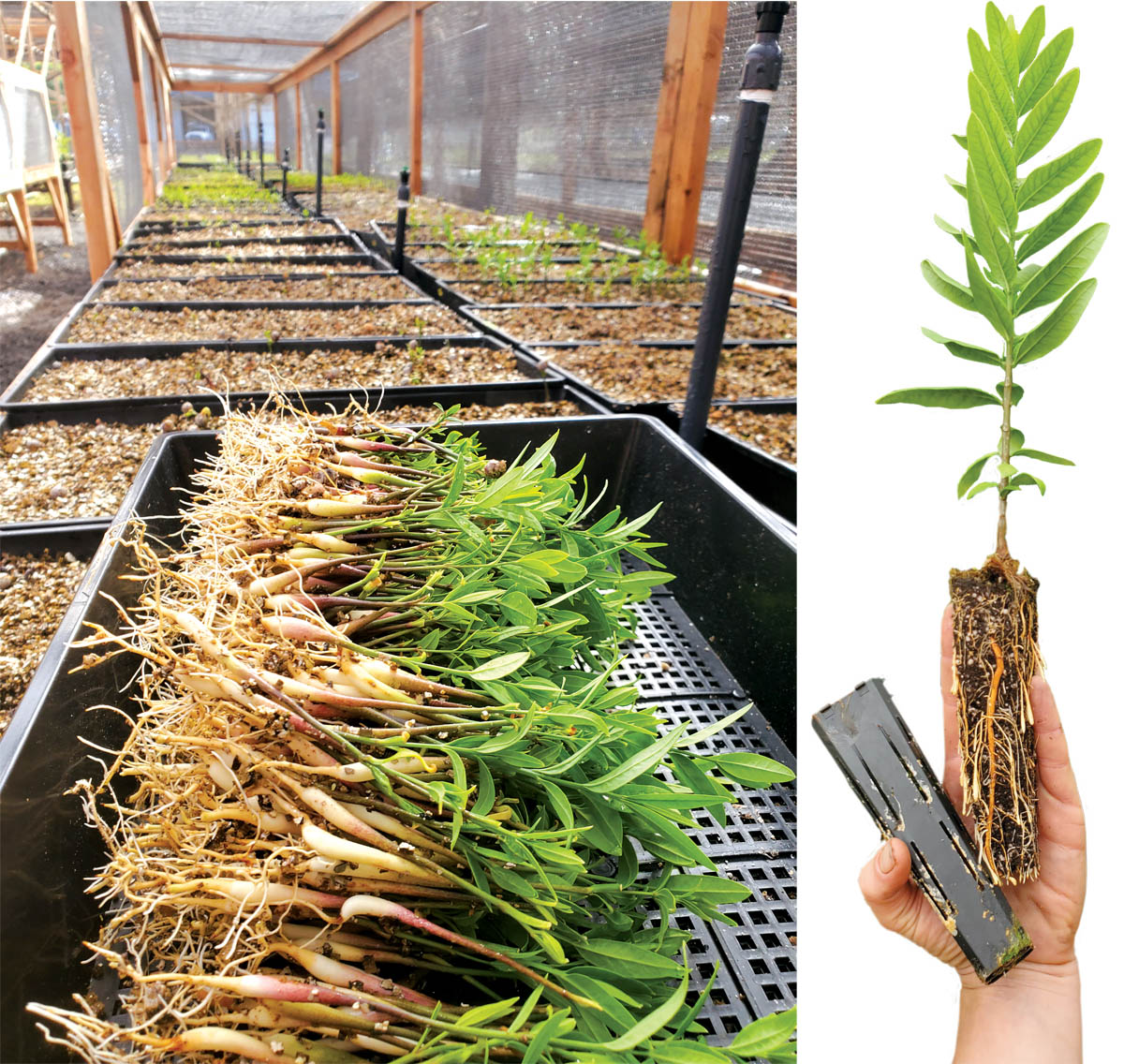
Careful Processing
Forest Solutions, a company located in Pa‘auilo that has provided forestry services for 25 years, helps run the nursery and reforestation project. In addition to ‘iliahi, KFN grows a large amount of koa, pilo, ‘ōhi‘a, ‘a‘ali‘i, and naio, which also has a fragrant oil. All aspects of the nursery involve research, figuring out the best ways to propagate and ensure the healthy life of the different native species.
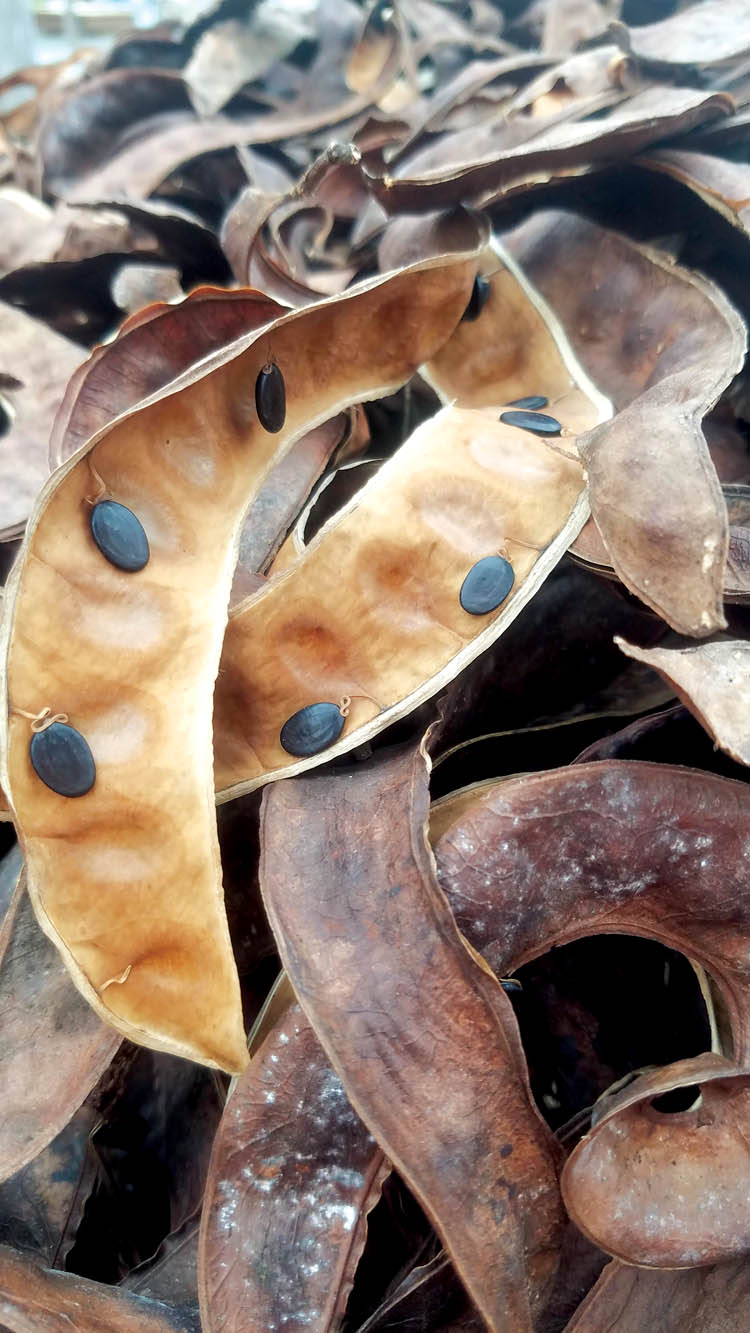
The nursery is located at 3400 feet, downslope of, but within the KMR reforestation area, all of which is now fenced to keep out hooved animals. “The seedlings get to grow in the same conditions they will be planted out in,” says Katrina Isch, who helped start the nursery in 2019. The nursery workers enjoy going up mauka to collect seed, which is possible because pockets of old native forest survive intact in kipuka—knolls or other areas lava flowed around. “It’s a treasure to have this seed source,” says Katrina.
Lore Witt, a nursery technician with Forest Solutions explains, “After collecting the seed, we process it and clean it. All the seeds are different and require different processing. We sow them in trays, and when big enough we prick them out and give them space to grow and breathe. Then we put them outside in the sun and get them ready to go in the ground, which is always a really exciting day.” She adds, “I love my job, all aspects of it. I love seeing the whole cycle.”
KFN is “planting the forest back together,” as Katrina puts it—at several sites around the island. As with a forest, they plant in succession, starting with koa and ‘a‘ali‘i, because these saplings can handle direct sunlight, and then once they are established, a mix of other native species are planted in their shade. When the forest is established, it will start to reseed naturally. Until that time, the nursery shelters the seedlings from pests and harsh conditions.
In the four years since being planted, the koa trees are now 15–20 feet tall. “I am always filled with joy and hope as I drive through the area that was planted in 2018, in awe of how they grow so fast,” says Keli‘ikanoe. It does bring hope that the forest can be planted back together, with the work of so many loving hands. ❖

For More Information and Volunteer Opportunities:
hikiola.org
kealakekuaforestnursery.com
Rachel Laderman, Lynker Sustainable Pacific Program
Hawai‘i Island
